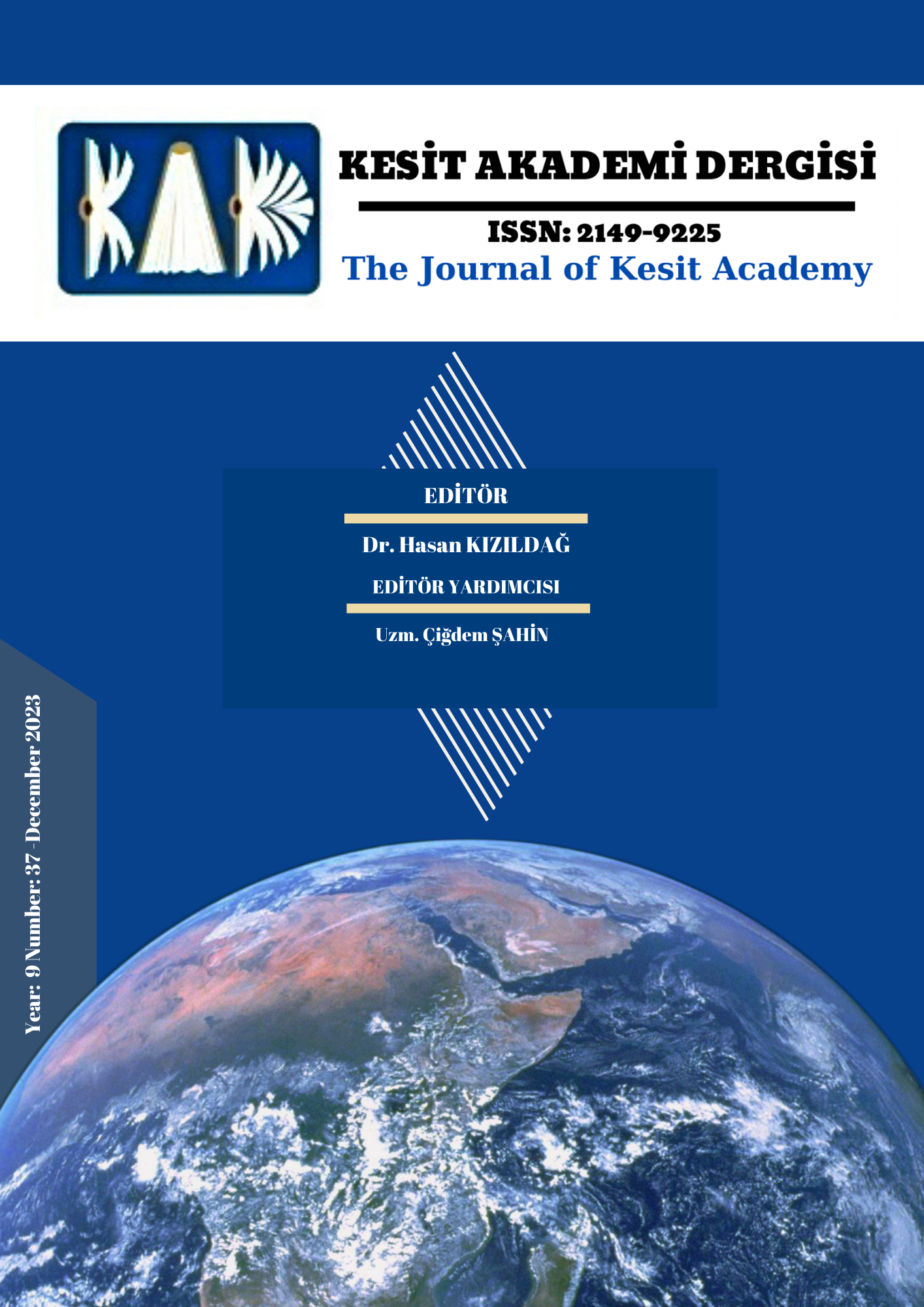Görsel Sanatlar Destekli Geometri Öğretiminin Öğrencilerin Yaratıcı Kişilik Özelliklerine ve Akademik Başarılarına Etkisi
Author :
Abstract
Araştırmanın amacı 5. Sınıf öğrencilerinin geometri dersi ile ilgili gereksinimlerini karşılamaya dönük görsel sanatlar destekli bir öğretim programının tasarlanması, bu program dahilindeki öğrencilerin algılarının ve deneyimlerinin incelenmesi ve tasarlanan programın öğrenci başarılarına ve yaratıcı kişilik özelliklerine etkisinin ölçülmesidir. Bu bağlamda geometri öğretiminde görsel sanatlar destekli bir öğretim programı tasarlanmıştır. Tasarlanan öğretim programı 5 hafta boyunca uygulanmıştır. Araştırmanın yöntemi ise iç içe karma desen olarak seçilmiştir. Tasarlanan öğretim programının öğrencilerin başarısına etkisi ve yaratıcı kişilik özellikleri üzerinde nasıl değişimler yarattığı hakkındaki diğer veriler, nitel ve nicel olarak toplanmıştır. Görsel sanatlar destekli öğretim programı uygulaması (GSDÖP) esnasında nitel olarak öğrenci günlükleri ve görüşmeleri üzerinden söylem analizi incelemeleri yapılmıştır. Nicel olarak ise tasarlanan öğretim programının öğrencilerin yaratıcı kişilik özelliklerine ve geometri başarılarına etkisini ölçmek adına Şahin ve Danışman (2017) tarafından geliştirilen Yaratıcı Kişilik Özellikleri Ölçeği ile Ulupınar Özkuzukıran (2020) Matematik Başarı Testi ön-test ve son-test olmak üzere uygulama başında ve sonunda iki defa uygulanmıştır. Çalışmanın araştırma grubunu, 2021-2022 eğitim öğretim yılında Mersin’de bir devlet okulunda 5. sınıfta öğrenim gören, amaca uygun örnekleme yöntemiyle seçilen 23 öğrenci oluşturmaktadır. Elde edilen verilerin analizi yapılırken normallik testleri yapıldıktan sonra ilişkili örneklemler t-testi kullanılmıştır. Nitel veri analizi ise söylem analiziyle gerçekleştirilmiştir. Sonuçta yapılan uygulamanın nicel verileri öğrencilerin matematik dersinde akademik başarılarını artırdığını, yaratıcı kişilik özellikleri üzerinde anlamlı bir fark yaratmadığını ortaya koymuştur. Nitel verileri de öğrenci-öğretmen diyaloglarında etkileşimli diyaloglu zincir desenin kullanıldığını göstermiştir.
Keywords
Abstract
The aim of the research is to design a visual arts-supported curriculum to meet the needs of 5th-grade students regarding the geometry course, to examine the perceptions and experiences of the students within this program, and to measure the effect of the designed program on student success and creative personality traits. In this context, a visual arts-supported curriculum was designed in teaching geometry. The designed curriculum was implemented for 5 weeks. The method of the research was chosen as an embedded mixed design. Other data about the impact of the designed curriculum on students' success and how it created changes in their creative personality traits were collected qualitatively and quantitatively. During the visual arts supported curriculum implementation (VSC), discourse analysis was conducted qualitatively through student diaries and interviews. Quantitatively, in order to measure the effect of the designed curriculum on students' creative personality traits and geometry achievements, the Creative Personality Characteristics Scale developed by Şahin and Danışman (2017) and the Ulupınar Özkuzukıran (2020) Mathematics Achievement Test were used at the beginning and end of the application. It was applied twice as a pre-test and post-test. The research group of the study consists of 23 students studying in the 5th grade at a public school in Mersin in the academic year of 2021-2022. The sample was selected by the purposeful sampling method. While analyzing the data, the paired sample t-test was used after normality tests. Qualitative data analysis was carried out using discourse analysis. As a result, the quantitative data of the application showed that it increased the academic achievement of mathematics and have no statistically significant differences on creativity. According to the qualitative data, it was revealed that the teacher and the students used the interactive dialogue chain design.
